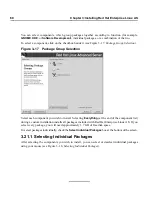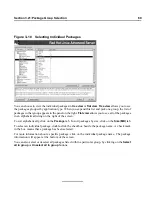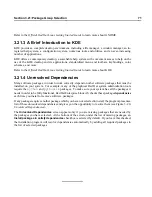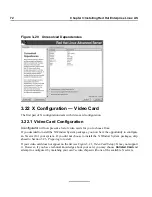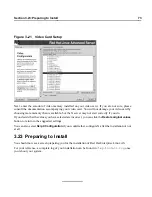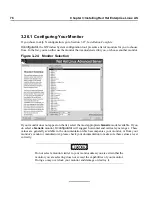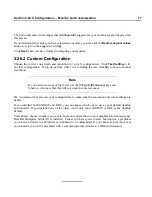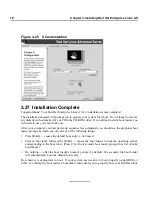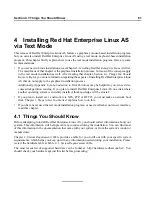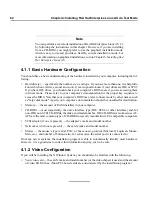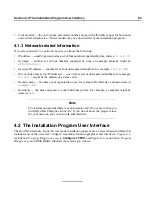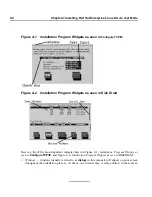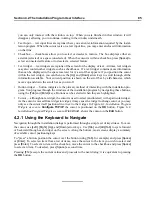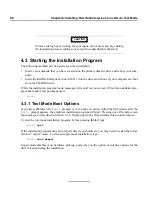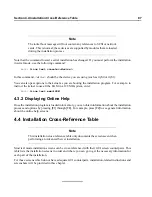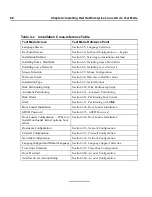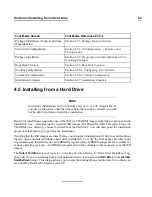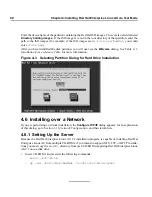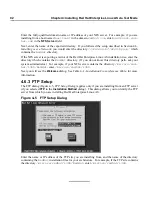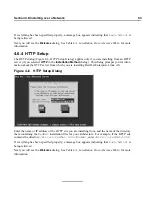
82
Chapter 4:Installing Red Hat Enterprise Linux AS via Text Mode
Note
You can perform a text mode installation of Red Hat Enterprise Linux AS 2.1
by following the instructions in this chapter. However, if you are installing
from a CD-ROM, you might prefer to use the graphical installation mode,
which is easy to use and provides a flexible, custom installation mode. For
more information on graphical installations, turn to Chapter 3, Installing Red
Hat Enterprise Linux AS.
4.1.1 Basic Hardware Configuration
You should have a basic understanding of the hardware installed in your computer, including the fol-
lowing:
•
Hard drive(s) — specifically, the number, size, and type. If you have more than one, it is helpful to
know which one is first, second, and so on. It is also good to know if your drives are IDE or SCSI.
If you have IDE drives, you should check your computer’s BIOS to see if you are accessing them
in linear mode. Please refer to your computer’s documentation for the proper key sequence to
access the BIOS. Note that your computer’s BIOS may refer to linear mode by other names, such
as "large disk mode." Again, your computer’s documentation should be consulted for clarification.
•
Memory — the amount of RAM installed in your computer.
•
CD-ROM — most importantly, the unit’s interface type (IDE, SCSI, or other interface) and, for
non-IDE, non-SCSI CD-ROMs, the make and model number. IDE CD-ROMs (also known as AT-
API) are the most common type of CD-ROM in recently manufactured, PC-compatible computers.
•
SCSI adapter (if one is present) — the adapter’s make and model number.
•
Network card (if one is present) — the card’s make and model number.
•
Mouse — the mouse’s type (serial, PS/2, or bus mouse), protocol (Microsoft, Logitech, Mouse-
Man, etc.), and number of buttons; also, for serial mice, the serial port it is connected to.
On many newer systems, the installation program is able to automatically identify most hardware.
However, it is a good idea to collect this information anyway, just to be sure.
4.1.2 Video Configuration
If you will be installing the X Window System, you should also be familiar with the following:
•
Your video card — the card’s make and model number (or the video chipset it uses) and the amount
of video RAM it has. (Most PCI-based cards are auto-detected by the installation program.)
Summary of Contents for ENTERPRISE LINUX AS 2.1 -
Page 1: ...Red Hat Enterprise Linux AS 2 1 The Official Red Hat Enterprise Linux AS Installation Guide ...
Page 8: ...viii ...
Page 14: ...xiv Introduction ...
Page 15: ...Part I Installing Red Hat Enterprise Linux AS ...
Page 16: ......
Page 26: ...26 Chapter 1 Steps to Get You Started ...
Page 30: ...30 Chapter 2 System Requirements Table ...
Page 80: ...80 Chapter 3 Installing Red Hat Enterprise Linux AS ...
Page 94: ...94 Chapter 4 Installing Red Hat Enterprise Linux AS via Text Mode ...
Page 95: ...Part II Configuring Red Hat Enterprise Linux AS ...
Page 96: ......
Page 100: ...100 Chapter 5 Introduction ...
Page 114: ...114 Chapter 6 Linux Virtual Server Overview ...
Page 153: ...Part III Appendixes ...
Page 154: ......
Page 156: ...156 Appendix A Additional Resources for LVS Clustering ...
Page 160: ...160 Appendix B A Sample etc sysconfig ha lvs cf File ...
Page 162: ...162 Appendix C Removing Red Hat Linux ...
Page 168: ...168 Appendix D Getting Technical Support ...
Page 178: ...178 Appendix E Troubleshooting Your Installation of Red Hat Enterprise Linux AS ...

